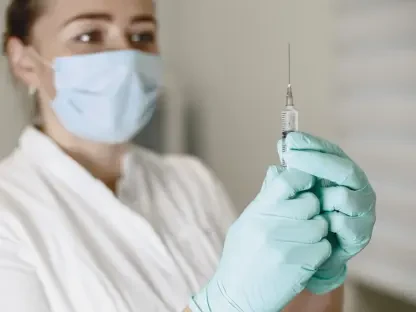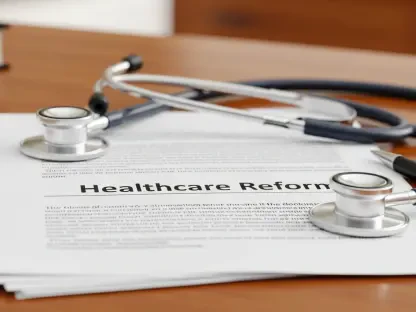Hospitals across the United States are grappling with an unprecedented financial crisis, burdened by skyrocketing costs, dwindling reimbursements, and relentless operational hurdles that threaten their very existence, while the American Hospital Association (AHA), representing nearly 5,000 hospitals and health systems nationwide, has sounded an urgent alarm to Congressional leaders. The AHA emphasizes the dire need for swift legislative intervention in a poignant letter dated September 15, 2025. The letter underscores the indispensable role these institutions play in delivering round-the-clock care to communities, while cautioning that without immediate support, many facilities risk slashing services or shuttering entirely. As the end-of-year legislative session approaches, the stakes have never been higher, with millions of Americans—especially in rural and underserved regions—relying on hospitals as their primary lifeline for medical care. This pressing situation demands a closer examination of the challenges at hand and the specific policy measures Congress could implement to avert a catastrophic collapse of the healthcare system.
Addressing the Financial Strain on Hospitals
The financial pressures bearing down on hospitals have reached a critical point, with inflation, soaring drug prices, and supply chain disruptions driving operational costs to unsustainable levels. On top of this, inadequate reimbursements from Medicare and Medicaid exacerbate the strain, leaving many facilities struggling to keep their doors open. A particularly alarming issue is the impending $8 billion cut to Medicaid Disproportionate Share Hospital (DSH) payments, scheduled to take effect on October 1, 2025. These funds are vital for hospitals that serve low-income and vulnerable populations, including children, the elderly, and the disabled. The AHA has made a compelling case for Congress to block these reductions, arguing that such cuts could trigger a domino effect of service reductions or closures, disproportionately harming those who rely on these safety-net providers for essential care. Without prompt action, the financial instability of hospitals could spiral into a broader public health crisis, undermining access to care across the nation.
Beyond the immediate threat of Medicaid cuts, the broader economic challenges facing hospitals paint a grim picture of an industry on the brink. Rising labor costs, driven by staffing shortages and the need to attract skilled professionals, compound the burden of underfunded public insurance programs. Many hospitals, especially smaller ones, lack the financial reserves to weather these storms, risking bankruptcy or consolidation with larger systems that may not prioritize local needs. The AHA’s plea to Congress emphasizes that legislative relief must go beyond temporary fixes and address systemic underpayment issues to ensure long-term sustainability. Protecting these institutions isn’t just about preserving budgets; it’s about safeguarding the health and well-being of entire communities that depend on them for emergency services, chronic disease management, and preventive care. Congressional intervention could be the difference between a hospital staying open to serve its patients and one forced to close its doors for good.
Ensuring Access for Rural Communities
Rural hospitals, often the only healthcare providers in vast, isolated areas, face unique vulnerabilities that demand urgent legislative attention to prevent widespread loss of access. Many of these facilities operate on razor-thin margins, relying on specialized programs like Medicare-dependent Hospitals and Low-Volume Adjustment for financial stability. With these critical supports set to expire imminently, the AHA is pressing Congress to extend them, highlighting the catastrophic consequences of inaction. For rural residents, the closure of a local hospital could mean traveling hours for emergency care or routine medical services, a delay that could prove fatal in critical situations. The ripple effects extend beyond individuals to entire communities, where the absence of a hospital can deter economic development and exacerbate health disparities. Congress has the power to prevent this outcome by prioritizing the renewal of these programs as a cornerstone of equitable healthcare access.
Moreover, the fragility of rural healthcare infrastructure underscores a broader challenge: ensuring that geographic isolation does not equate to medical neglect. Rural hospitals often serve as community anchors, providing not only medical care but also employment and stability in regions with limited resources. Losing these facilities would deepen existing inequities, particularly for aging populations who may lack the means to seek care elsewhere. The AHA’s advocacy for sustained federal support reflects a recognition that rural healthcare is not a niche issue but a national priority. By extending financial lifelines to these hospitals, Congress can help maintain a safety net for millions of Americans who might otherwise be left without viable options for treatment. This is not merely a policy decision but a moral imperative to protect the most vulnerable from being disproportionately impacted by systemic failures in healthcare funding and support.
Advancing Innovation in Care Delivery
The rapid adoption of telehealth and hospital-at-home programs during recent public health challenges has transformed the landscape of healthcare delivery, offering unprecedented access and convenience to millions of patients. These innovative models have allowed individuals to receive high-quality care without stepping foot in a traditional facility, a boon for those with mobility issues or living far from medical centers. However, the waivers enabling these programs are on the verge of expiration, threatening to halt progress in its tracks. The AHA is advocating for Congress to make telehealth waivers permanent, expand the workforce dedicated to virtual care, and grant additional time for hospital-at-home initiatives to demonstrate their effectiveness in reducing costs and improving patient outcomes. Such measures could cement these advancements as permanent fixtures in the healthcare system, ensuring that innovation continues to bridge gaps in access.
Equally important is the potential for these programs to alleviate pressure on overburdened hospital infrastructure, particularly in times of crisis. Telehealth can reduce unnecessary emergency room visits by addressing minor issues remotely, while hospital-at-home models enable patients with acute conditions to recover in familiar surroundings under professional supervision. The AHA’s push for legislative support in this area is grounded in evidence that these approaches not only enhance patient satisfaction but also optimize resource allocation within strained systems. By prioritizing the permanence of these waivers, Congress has an opportunity to foster a more resilient and adaptable healthcare framework that meets the evolving needs of a diverse population. Failure to act could mean losing ground on innovations that have already proven their worth, reverting to outdated models ill-suited for modern challenges, and ultimately compromising the quality and reach of medical services nationwide.
Preserving Affordable Coverage and Essential Programs
The looming expiration of Enhanced Premium Tax Credits (EPTCs) at the end of 2025 poses a severe threat to affordable insurance coverage for millions of Americans, with rural states expected to bear the brunt of the fallout. Without these credits, out-of-pocket premiums could surge by over 75%, leading to a sharp rise in uninsured individuals and a corresponding spike in uncompensated care for hospitals. The AHA warns that this could overwhelm emergency departments and strain community health resources, urging Congress to extend EPTCs as a critical step toward maintaining access to care. This issue transcends individual affordability, impacting the broader healthcare ecosystem by placing additional financial burdens on providers already grappling with tight budgets. Legislative action here is essential to prevent a vicious cycle of reduced coverage, increased hospital strain, and diminished community health outcomes.
In tandem with coverage concerns, the AHA is championing the protection of key programs like the 340B Drug Pricing Program, which enables hospitals to lower medication costs and expand services for underserved populations. Opposition to site-neutral payment proposals also remains a priority, as these could cut payments to hospital outpatient departments, ignoring the higher standards of care they provide to complex patients. Additionally, supporting legislation to protect healthcare workers from violence through federal penalties is seen as vital to maintaining a safe working environment. Each of these initiatives reflects a commitment to preserving the foundational elements of hospital operations while addressing systemic threats. Congress must weigh these interconnected priorities to ensure that hospitals can continue serving as pillars of community health, rather than succumbing to policies that undermine their mission and capacity to deliver critical care.
Building a Sustainable Path Forward
Reflecting on the multifaceted challenges hospitals face, it’s evident that Congressional leaders have taken the warnings to heart, engaging in robust discussions during the final legislative sessions to address the crisis. Financial relief measures were debated with urgency, as the potential consequences of inaction became starkly clear through the AHA’s compelling advocacy. The focus on rural access and innovative care models like telehealth resonated with policymakers, prompting serious consideration of extending vital programs and waivers that have proven their worth.
Looking ahead, the path to sustainability hinges on implementing a balanced strategy that combines immediate financial support with long-term policy reforms. Hospitals need ongoing collaboration with Congress to refine reimbursement models, protect essential programs, and invest in workforce safety. By prioritizing these areas, lawmakers can help ensure that healthcare providers remain equipped to meet community needs, paving the way for a resilient system capable of adapting to future challenges without sacrificing access or quality.









